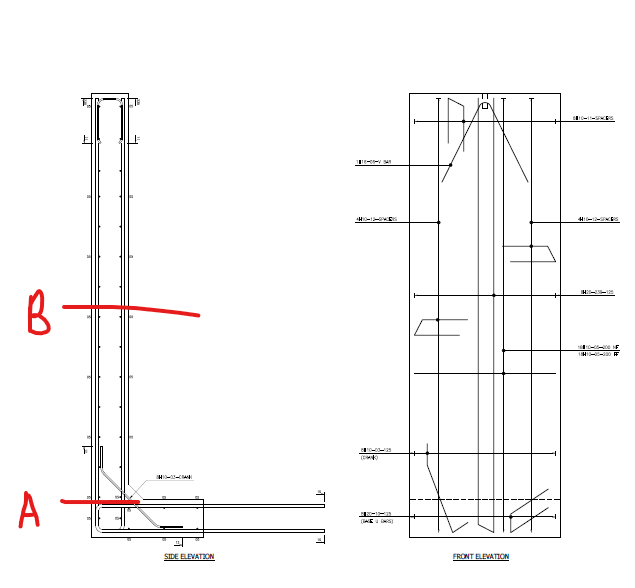Mhobbs:
Of course, you don’t want to unduly complicate the labor involved in placing rebars or conc. But, there is nothing wrong with saving rebar stl. where you can without adding much difficulty, or varying the vert. face thickness if that’s easy to do in a casting bed. The vert. back face bars can all be the same size bar, but one being full height and an alternate bar terminating about at your Sec. B height, these two alternate and you fiddle a little to pick a spacing and a bar size. Although, since the two bars are diff. lengths, they could be a diff. size too, to add stl. area per foot of wall, at the same spacing. If the vert. wall tapers from 10" at the top to 14" or 15" at the bot. this reduces the demand on the primary vert. stl. You want the primary vert. stl. to have the max. possible “d” value/distance, so you want the hairpins or “U” bars around the edges of the panels to be small bars and/or inside the vert. stl., maybe the legs of the “U” bars are in the same plane as the primary vert. bars. You don’t want the long/primary vert. stl. to be a “U” bar, talk about a difficult long/heavy/unwieldy bar to bend and handle. The primary vert. bars are “L” shaped with the horiz. leg at the bot. of the ftg. and pointing back into the ftg. Maybe I’m misreading your drawings, those are only of the rebar cage, right? The horiz. and vert. rebars are two mats of stl. held apart by the edge “U” bars. And, you have two mats of stl. in the ftg. too.

